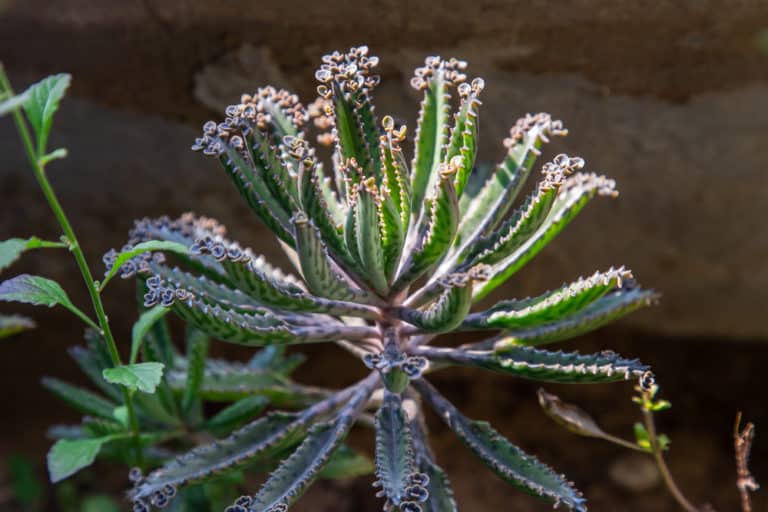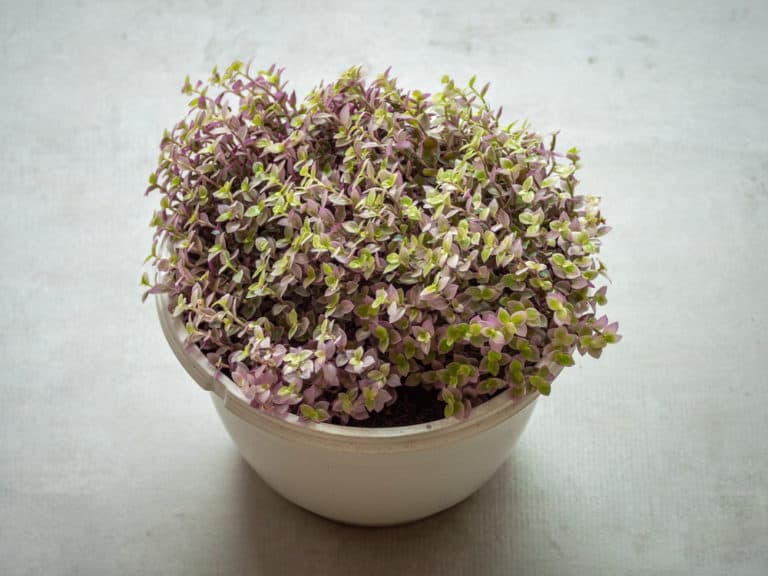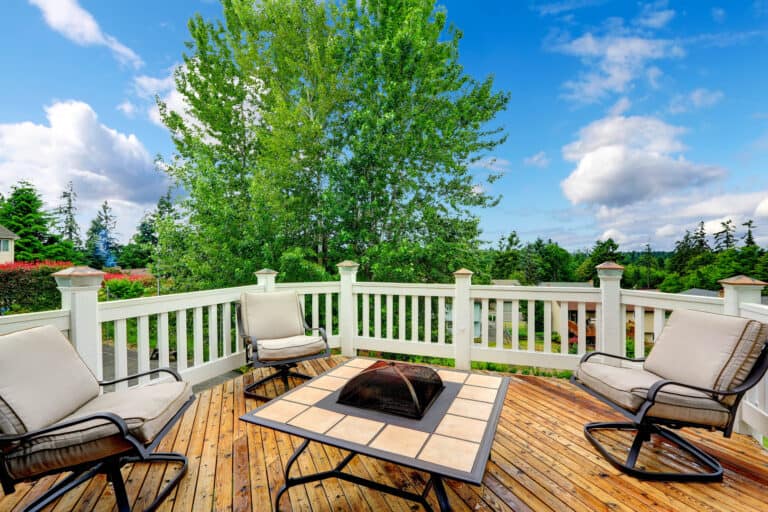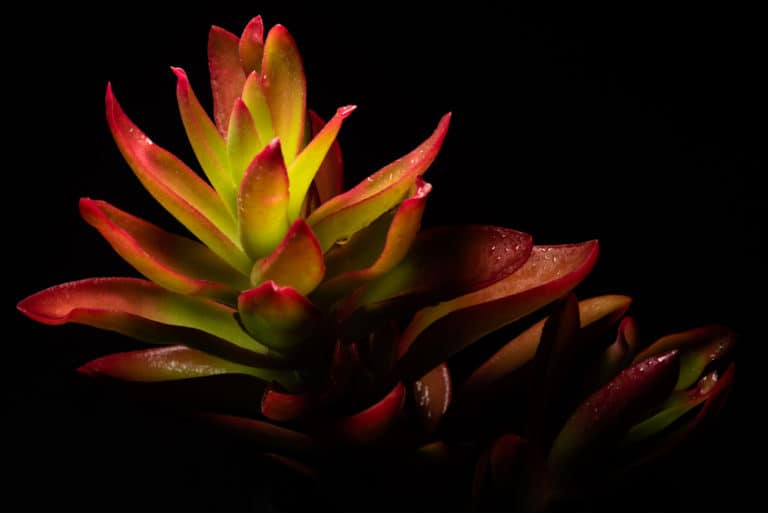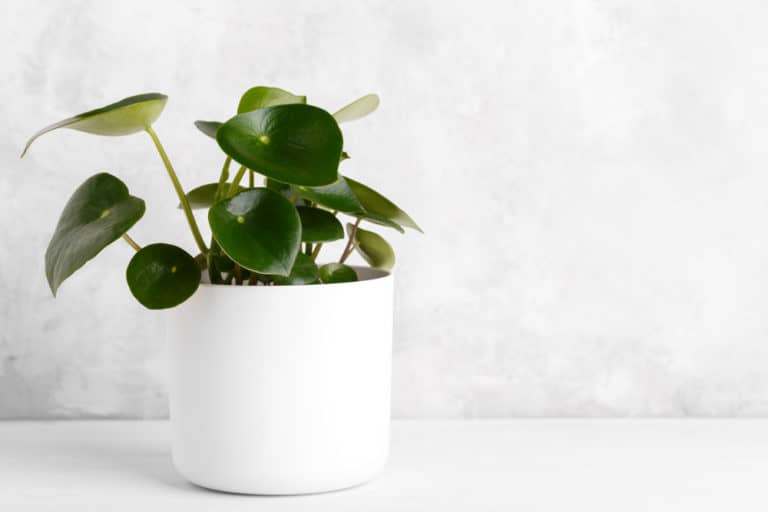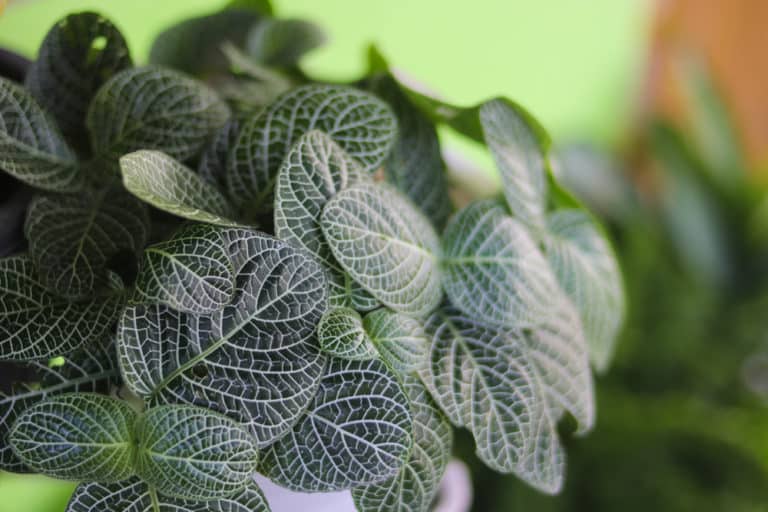Alocasia Cuprea ‘Red Secret’ Care Guide (2024)
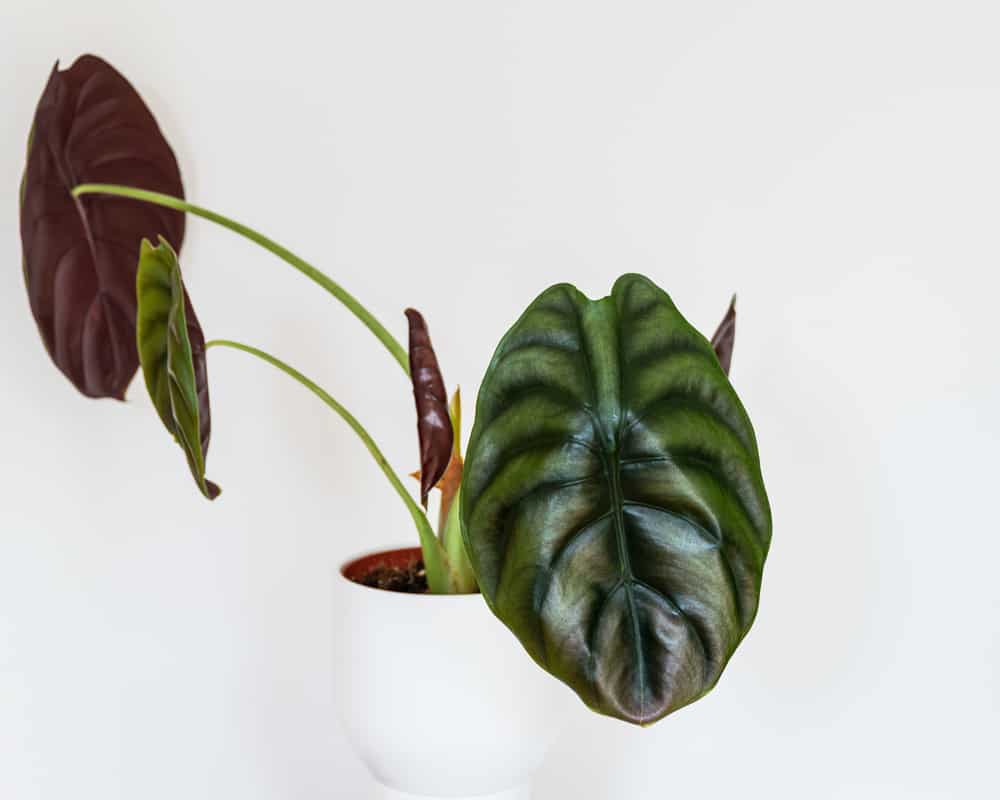
It’s quite hard not to fall in love with Alocasia cuprea. Another stunning species that comes from the Alocasia genus, A. cuprea is one of the rare houseplants to find. Consider yourself lucky to ever encounter one. But even with its special characteristics, this plant is not that hard to care for.
| Scientific Name | Alocasia cuprea |
| Common Name | Red Secret Alocasia, Mirror Plant, Jewel Alocasia |
| Light | Bright, indirect light |
| Watering | Moderate watering |
| Temperature | 50oF (10oC) to 85oF (29oC) during daytime54oF (12oC) to 65oF (18oC) during nighttime |
| Hardiness Zone | USDA hardiness zones 10-11 and some sheltered parts of zone 9b |
| Humidity | 80% to 95% |
| Soil Type | Well-draining soil |
| Soil pH | Slightly acidic (5.5 to 6.5) |
| Fertilizing | Apply fertilizer every two weeks during the growing season |
| Repotting | Spring or early summer, whilst the plant is actively growing |
| Pruning | Prune during the growing season |
| Propagation | Root division |
| Toxicity | A very poisonous plant with a number 4 toxicity level |
| Mature Size | 12 to 18 inches high |
| Bloom Time | Late spring to early summer |
What’s Unique About Alocasia cuprea?
The unique thing about Alocasia cuprea plant is its metallic appearance. The term “cuprea” stands for coppery-like. A combination of red, dark green, and plum makes up the color of its leaves. On its surface is a metallic sheen adding up to its attractiveness. It’s exotic and unique, a rare and valuable find among houseplant enthusiasts.
Native to the jungles of Borneo, this species has a tropical origin. Although it’s an ideal houseplant for those who love exotic vibes, you must take extra care in handling it. This plant is known to be highly toxic. Hence, the need for extra caution.
Alocasia cuprea Care
One good thing about Alocasia cuprea plant care is that it doesn’t require so much fuss. This plant could thrive with only the basic requirements taken care of. If you have had Alocasia before, the cuprea care is pretty much the same. The most important thing is to make sure it doesn’t get overwatered.
Light
As this species originates from the jungles where canopies of trees are mostly present, it’s normal for this plant to experience indirect light. These are the sun rays that pass through the leaves of large trees. Hence, it needs that kind of light condition to thrive.
When kept indoors, Alocasia cuprea light requirements include exposure to bright, indirect light for about 6 to 8 hours a day. Avoid exposure to full sun, especially if the light is too intense as it can scorch the delicate leaves. A north or east-facing window is a good location to satisfy the cuprea light needs.
Watering
You must pay close attention to Alocasia cuprea watering if you want it to live long. Alocasia cuprea plants need only an average amount of water in order to grow well. You can basically water cuprea two to three times a week depending on the prevailing season. What’s important is that you wait for at least 40% of the soil to dry first before watering again. You can check this by inserting a finger or a stick into the substrate.
Avoid overwatering the plant. Ensure that good drainage exists in the container so that excess water won’t pool into it. Always remember that this plant has moderate watering needs.
Temperature
The best temperature for cuprea is something that is warm. This is why it thrives well in an indoor environment where it’s more insulated and protected from the coldness of an outside environment. The recommended Alocasia cuprea temperature range is between 50oF (10oC) to 85oF (29oC) during daytime and 54oF (12oC) to 65oF (18oC) during nighttime.
If your plant is tended outdoors, make sure to bring it indoors during the night to avoid the chilly environment. This plant has low cold temperature tolerance. If indoors, keep it away from cold drafts, too. For best growth, plant an Alocasia cuprea in areas located under USDA hardiness zones 10-11 and some sheltered parts of zone 9b.
Humidity
High humidity is a good friend of tropical plants like Alocasia species. Providing such an environment will make your plant thrive. The ideal humidity for cuprea is at least 80%. But it can be extra challenging to maintain such a humidity level at home. So, the use of a humidifier will definitely help.
There are also other ways to satisfy the Alocasia cuprea humidity requirements. You can relocate the plant to your kitchen or bathroom because these places are naturally moist. Just make sure it has enough access to bright light. Grouping your A. cuprea plant with other tropical species will also increase humidity.
Soil
As this plant is susceptible to overwatering, it’s always best to invest in a well-draining soil mix. Adding in amendments such as peat moss, perlite or coco coir will improve the soil’s aeration that will help facilitate draining excess water. Remember to also use sterilized soil for cuprea in order to prevent fungal or bacterial infection in the future.
Aside from being well-draining and sterile, your Alocasia cuprea soil should also have the right pH. Such property is important in determining the availability of nutrients in the soil that the plant could utilize. The ideal ph level for cuprea is between 5.5 to 6.5, which is a slightly acidic range.
Fertilizer
It’s a must that you invest in good fertilizer for cuprea. This one is a heavy feeder and will certainly need a steady supply of macro and micronutrients in order to thrive. During the growing season, apply Alocasia cuprea fertilizer every two weeks. When the winter season hits, give your plant a rest from the fertilizers.
Since commercial fertilizers are usually concentrated, diluting them to almost half or a quarter of their original strength is always advisable. This will give you a less concentrated fertilizer ratio that your potted Alocasia will be able to take in. It also lessens the chance of fertilizer burn occurrence.
Potting & Repotting
It will take about two years before you can proceed with Alocasia cuprea repotting. You will have to wait for the whole plant to outgrow its current pot size. An obvious sign would be when the roots start to seep out of the container’s holes.
It’s also best to replace the old potting mix when repotting cuprea. Use a new container that has a size slightly bigger than the old one. And before potting the plant again, make sure to check the roots and remove the diseased or aged ones.
Pro-Tip: Repot during the Spring season only when the plant is actively growing.
Pruning
There’s no need to conduct Alocasia cuprea pruning regularly. You would only need to propagate cuprea and occasionally trim down diseased or aged leaves. This will help the plant focus its energy on growing the young leaves. If the foliage is healthy-looking, there’s no need to do the pruning.
Should you decide to prune, ensure that you use a sterilized tool. Make sure it’s sharp so that once you create incisions, the wounds will be clean and not abrasively severed. The best time to do pruning or cutting cuprea leaves will be the Spring season. It’s during this time that your plant will show vigorous growth, hence, recovery will be fast.
Propagation
You can easily propagate cuprea by means of root division. You can do this concurrently with repotting. As you remove the whole plant from its old pot, you may divide it into 2 or 3 sections, depending on how many offshoots there are. It’s basically like separating the baby alocasias from the mother plant so that you can grow each one individually.
Be careful not to heavily damage the roots as you conduct Alocasia cuprea propagation. If the roots are damaged, your propagated alocasia will have a low chance of survival. They may find it hard to recover from the transplant shock. So, keep the roots intact as much as possible.
Also, make sure to check out our in-depth Alocasia macrorrhiza plant care guide.
Common Problems of Alocasia cuprea
Growing Alocasia cuprea can actually be an overwhelming task, especially for a newbie. Times will come when you’d encounter Alocasia cuprea problems. But don’t let these troubles scare you away. Most of the problems with cuprea will be observed in the leaves. Such include rusty leaves, yellow leaves, or the appearance of leaf spots. The good thing is that majority of them can be easily managed and resolved.
Pests
Harmful bugs such as spider mites and mealybugs are common enemies of Alocasias. Aphids can also be a problem for cuprea. These tiny organisms are mostly found on the surface and undersides or leaves and stems. They’re tiny in size, hence, you need to have a keen eye to spot them.
You can treat these Alocasia cuprea pests by spraying the infested portions with solutions containing neem oil, insecticidal soap, and water. Be patient and do this repeatedly until you manage to drive away the pests. If the plant is heavily infested, take it into isolation before treatment. Also, prune areas that are massively affected.
Diseases
Disease occurrences are another problem that could bring serious damage to your houseplant. The common Alocasia cuprea diseases are botrytis, rust, southern blight, leaf spot, and powdery mildew. Botrytis leaves spots and yellow lesions on the leaves. Southern blight also caused yellowing of the leaves. Powdery mildew looks like a white powder that eventually becomes yellow.
Once your cuprea becomes diseased, it will experience severe stress leading to stunted growth and possible death. As a way of prevention, always use sanitized tools in gardening. Sterilize the potting soil and apply fungicides when necessary. Plant isolation of diseased species will also prevent the spread of diseases.
Growing Problems
Some of the growing problems you’ll probably encounter with your A. cuprea plant include the dropping of leaves, yellowing or browning, development of root rot, and leaf scorching. Each one has a primary cause behind it. You need to address those problems to cure your sick plant.
If it’s dropping its leaves in an unusual way, it’s probable that it’s experiencing stress due to temperature or humidity stress. Yellowing can be due to pests and disease, lack of nutrients, or overwatering. Root rot is obviously a result of overwatering. Leaf scorching, on the other hand, can be due to intense heat, or excess fertilizer.
Toxicity of Alocasia cuprea
Unfortunately, Alocasia cuprea has some serious toxicity issues. Due to the high level of calcium oxalates present in its tissues, it is labeled toxic to pets and humans. This is the reason why there’s a need to handle it with extra care. Otherwise, it will bring real trouble. If you have kids and pets at home, watch out.
For Humans
The needle-like crystals massively found in the tissues of Alocasia cuprea can cause irritation once it gets in contact with the skin. If yours is a sensitive one, you’ll most likely develop contact dermatitis. Not only that. If any portion of the plant material is ingested, you’ll experience severe discomforts like pain in the mouth, nausea, vomiting, and diarrhea.
The plant is equally toxic both to adult humans and children. That’s why we always advise that you keep it away from anyone’s reach. It also helps to put a label stating “toxic plant”. That way, the people around who are unfamiliar will be warned.
For Pets
Pets are easy targets of plant poisoning. They have the tendency to chew on plant foliage and if they ever do that to your Alocasia cuprea, they’ll certainly be in trouble.
The calcium oxalate crystals will penetrate your pet’s tissues creating serious irritation. Symptoms include pain in the mouth and GI tract. It will result in swelling making it hard for them to breathe. Hence, pets could potentially die.
If you have cats and dogs around, better place this plant in a location they couldn’t reach. If accidental ingestion happens, bring your pet to the nearest vet doctor for proper treatment.
Alocasia cuprea Appearance
Alocasia cuprea appearance is definitely stunning and unique. It has that metallic look that allows it to stand out from other Alocasia species. The leaves are primarily the focal point and asset of this plant. But it also does produce a cuprea flower. Here’s a more detailed description of this gem plant.
Foliage
One glance at the foliage of Alocasia cuprea and you’ll mistake it for a plastic plant. The leaves have that metallic appearance. The colors green, red, and plum mix together in creating that copper-brown color. The surface has a sheen look. The leaves are also stiff and have an erect arrow shape.
Each leaf has a corrugated texture when touched. The color of the foliage will remain vibrant and glossy if it receives enough light. Otherwise, it will fade into a pale look. Lack of humidity will also cause the leaf tips to burn. Hence, maintaining the ideal growing conditions is important.
Flowering
Alocasia cuprea flowering does occur during late spring to early summer. The flowers could last a few days but you can easily miss them because they aren’t as attractive as the leaves. They can easily go unnoticed. Blooming will occur only in the Alocasia plants that are already mature and ready for reproduction.
The flowers will appear like a white and green spathe that encloses the spadix. Such spadix which resembles the appearance of a corn ear also contains hundreds of small white flowers too. Later, it produces seeds that you could harvest and use for propagation. Although, this method isn’t much recommended because it isn’t efficient.
Size and Growth
An Alocasia cuprea plant has a slow to moderate growth rate and it will take 5 to 8 years for the whole plant to reach maturity. Once mature, the size of Alocasia cuprea can reach between 12 to 18 inches in height. The stems are relatively short because the leaves can grow oversized, taking up most of the plant’s size.
Providing the best environmental conditions is the key to helping the plant grow well. If the plant is showing signs of stunting or abnormal growth rate, check the roots. It’s highly possible that it’s experiencing root rot. If not, you may need to add fertilizer to give it a boost.
Alocasia cuprea Fragrance
While this plant possesses very attractive foliage, you can expect nothing when it comes to its scent. We can say that Alocasia cuprea fragrance has nothing to boast about. When smelled, this plant emits no special scent at all. But this could be a good thing if you aren’t a fan of strong scents or if you’re quite sensitive to fragrances.
However, if you want something that smells good, we recommend that you add a scent diffuser to your home. Such diffusers, along with your alocasia plants, will create a calm and refreshing environment for you to relax and enjoy.
Suggested Uses for Alocasia cuprea
With its extravagant beauty, there could be many ways in which you can utilize an Alocasia cuprea plant. You can grow it in pots and make it a focal display indoors. It will surely make a huge attraction as it adds color to any bare space. It has an enticing effect.
The foliage is also a good source of fresh air, especially in areas that lack ventilation. Combine it with other tropical plants to achieve the refreshing vibe that you like. You may also plant it outdoors to add color to your landscape. Just make sure it’s not directly hit by scorching sunlight.
FAQ
What is Alocasia cuprea?
Alocasia cuprea is another unique and rare species of Alocasia that’s popular for its metallic appearance. It’s also known as Red Secret Alocasia, Mirror Plant, or Jewel Alocasia.
How to identify Alocasia cuprea?
You’ll easily identify Alocasia cuprea by looking at its leaves. Its color is a combination of green, red, or plum, creating that copper look. It has a glossy appearance, too.
How to care for Alocasia cuprea?
Make it a point to mimic the natural environment where it originates. It should have bright, indirect light, moderate watering, high humidity, and warm temperature.
How to grow Alocasia cuprea indoors?
Place it in a bright location where it receives ample light. Keep it away from cold drafts. And make sure to maintain high humidity in the room where it’s placed.
How to grow Alocasia cuprea outdoors?
Plant it in a semi-shaded place, usually the understory of a canopy. Water it twice or thrice a week and provide fertilizer to boost its growth.
How fast does Alocasia cuprea grow?
Alocasia cuprea has a slow to moderate growth rate. It will take 5 to 8 years for it to reach a mature size. You will need to repot every two years, too.
How tall does Alocasia cuprea grow?
A mature Alocasia cuprea will reach a size of 12 to 18 inches in height. The leaves are oversized, so it fills up most of the plant’s shape.
How to make Alocasia cuprea grow faster?
Just provide the ideal growing requirements and your plant will surely grow well. Alocasia cuprea isn’t a fast-growing species, so you really have to wait.
How to stake Alocasia cuprea?
If ever your plant gets droopy due to the oversized leaves, you can tie the stems into a stake to keep it well-supported. The stake should be sturdy too.
How to pot Alocasia cuprea?
Choose a pot that’s not too big or too small. Fill the half portion with potting mix, then plant your Alocasia cuprea. Add in the potting mix, so all spaces are filled. Water the pot.
How to revive Alocasia cuprea?
Relocate your plant to a location that has the ideal growing conditions, whether indoors or outdoors. Identify the source(s) of stress and try to lessen them as much as possible.
Why is my Alocasia cuprea dying?
This could be due to overwatering. It’s important to check the health status of the roots first. Also, check for signs of pest and disease occurrences. From there, you can make certain treatments.
Why is my Alocasia cuprea drooping?
Drooping in Alocasia can be due to temperature stress, water stress, lack of humidity and light, as well as the presence of pests and diseases.
How cold can Alocasia cuprea tolerate?
Temperatures below 50°F (10°C) can be detrimental to Alocasia cuprea’s health. Remember that this plant loves a warm environment, so keep it away from cold drafts.
How to get rid of pests on Alocasia cuprea?
Inspect the surface and underside of the leaves. Spray the infested parts with solutions containing neem oil, insecticidal soap, and water. Do this repeatedly until the pests are totally gone.
Is Alocasia cuprea toxic to cats?
Yes. This plant species, along with other Alocasias, are highly toxic to cats. It can cause problems such as discomfort in the mouth and GI tract of your cats.
Is Alocasia cuprea toxic to dogs?
Yes, Alocasia cuprea is also highly toxic to dogs. Hence, it’s not a pet-friendly houseplant. It contains large amounts of calcium oxalates that could irritate the mouth and GI tract of your furbabies.
Is Alocasia cuprea toxic to children?
Yes, it’s definitely toxic to children. Any portion of the plant can cause vomiting and diarrhea once ingested. The sap can also leave a burning sensation on the skin.
Is Alocasia cuprea toxic to humans?
Once the sap gets in contact with the skin, it can leave irritation. Once chewed or ingested, pain and burning sensation will occur on the mouth and throat.
Does Alocasia cuprea have a scent?
None. This plant is known to be fragrance-free. It does not emit any special scent or fragrance that could entice someone. Nevertheless, its beauty remains intact.

